The post 10 Types of Functional Materials Made from Hyaluronic Acid appeared first on Stanford Chemicals.
]]>1. Injectable Hydrogels
Hyaluronic acid can form injectable hydrogels through physical or chemical crosslinking. These gels solidify inside the body under normal conditions or in response to stimuli like temperature or pH. Because they hold a lot of water and mimic natural tissue structure, they are often used in minimally invasive surgery, tissue repair, and slow-release drug delivery. For instance, HA hydrogels can be injected into joints to relieve osteoarthritis—they lubricate the joint and support cartilage healing.
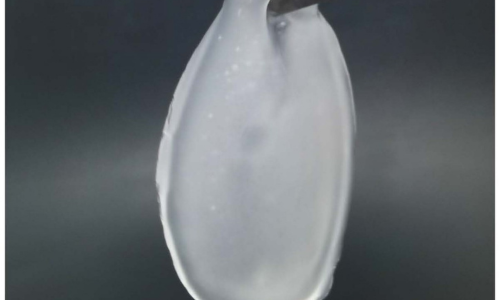
Figure 1. Hyaluronic acid hydrogels
Cross-linked Hyaluronic Acid Gel HA Powder
2. Nano Drug Carriers
Hyaluronic acid can be turned into nanoparticles or micelles using methods like self-assembly or emulsification. These tiny carriers help deliver drugs precisely to targets. Since HA naturally binds to CD44 receptors—which are overexpressed on many cancer cells—it’s useful for delivering chemotherapy drugs, nucleic acids, or proteins directly to tumors. This targeted approach helps reduce side effects.
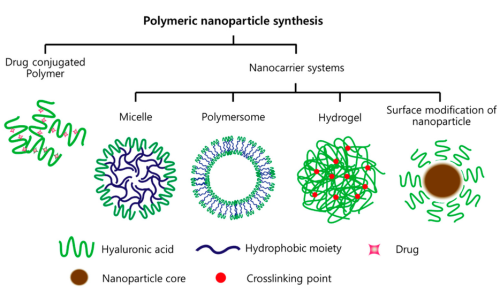
Figure 2. Formulations of hyaluronic acid (HA)-based nanomaterials.[1]
3. Electrospun Fiber Mats
By mixing hyaluronic acid with other polymers like collagen or polycaprolactone and electrospinning them, we can create nanofiber mats. These mats have a large surface area and a structure similar to natural fibers. They work well as wound dressings, vascular grafts, or nerve guides, helping cells attach, grow, and repair tissue.

Figure 3. Electrospun Fiber Membranes[2]
4. 3D Printing Bioinks
Hyaluronic acid is often used in 3D bioprinting because of its flow properties and bioactivity. When modified—for example, with methacrylate groups—it can be cured with light to print detailed tissue scaffolds. These are used to engineer cartilage, skin, blood vessels, and more.
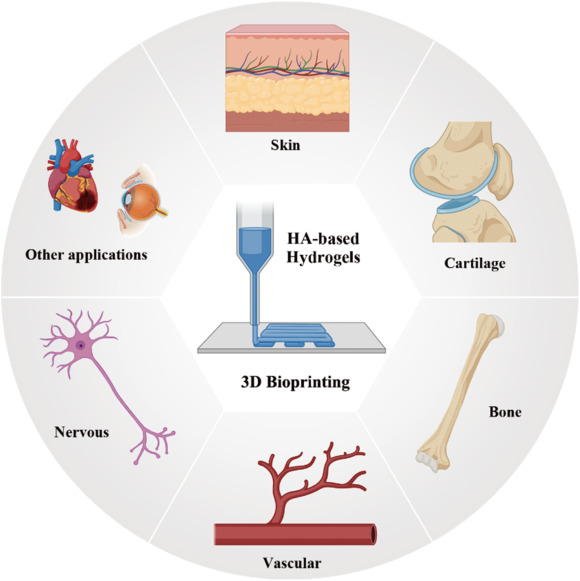
Figure 4. Hyaluronic acid for 3D bioprinting tissue engineering applications.[3]
5. Films & Coatings
Hyaluronic acid can be applied as a thin film or coating onto implants like artificial joints or heart stents. Techniques like spin-coating or grafting help create these layers. The coating improves compatibility with the body, reduces inflammation and scarring, and helps prevent bacterial growth.
6. Dissolving Microneedles
Hyaluronic acid can be made into small dissolving microneedles that carry active ingredients like vitamins, vaccines, or medicines. These microneedles painlessly pierce the top layer of skin and then dissolve, releasing what they carry. They’re used in skincare, vaccination, and managing chronic conditions.
Figure 5. Dissolvable hyaluronic acid microneedles (MNs)[4]
7. Tissue Glues & Sealants
Chemically modified HA—for example, with aldehyde or dopamine groups—can act as a strong biological adhesive, even on wet surfaces. It’s used in surgery to seal tissues, stop bleeding, or close leaks (like in spinal fluid), often replacing stitches and supporting faster healing.
8. Stimuli-Responsive Smart Materials
By tweaking its structure, hyaluronic acid can be designed to respond to specific body signals such as pH, enzymes, or redox changes. For example, an HA-based nanogel can break down quickly in the acidic, enzyme-rich tumor environment to release drugs right where they’re needed.
9. Composite Scaffolds
Combining HA with materials like hydroxyapatite, bioglass, or synthetic polymers produces strong, porous scaffolds. These are especially useful in bone repair—they provide mechanical support while encouraging bone cell growth and integration.
10. Eye Care Products
Hyaluronic acid is used in eye drops, gels, and corneal repair films because it retains moisture and lubricates well. It helps treat dry eyes, assists during cataract surgery, and aids in healing surface injuries. It can also extend how long a drug stays on the eye surface.
Summary
From the discussion of the ten materials above, it may be gleaned that research and current applications of HA have focused mainly on three aspects: (1) preparation of various derivatives and hydrogels using functional groups such as hydroxyls, carboxyls, and acetamido groups in HA molecules; (2) taking advantage of the interaction between HA molecules and receptors on the surface of cancer cells by using HA and its derivatives as drug carriers for targeted cancer treatment; and (3) developing further applications of HA hydrogels in fields like tissue engineering based on its close relationship with human physiological activities.
For more information on hyaluronic acid applications, check out Stanford Chemicals Company.
[1] Kim, J. H., Moon, M. J., Kim, D. Y., Heo, S. H., & Jeong, Y. Y. (2018). Hyaluronic Acid-Based Nanomaterials for Cancer Therapy. Polymers, 10(10), 1133. https://doi.org/10.3390/polym10101133
[2] Gruppuso, M., Iorio, F., Turco, G., Marsich, E., & Porrelli, D. (2022). Hyaluronic acid/lactose-modified chitosan electrospun wound dressings – Crosslinking and stability criticalities. Carbohydrate Polymers, 288, 119375. https://doi.org/10.1016/j.carbpol.2022.119375
[3] Ding, Y., Zhang, X., Mi, C., Qi, X., Zhou, J., & Wei, D. (2022). Recent advances in hyaluronic acid-based hydrogels for 3D bioprinting in tissue engineering applications. Smart Materials in Medicine, 4, 59-68. https://doi.org/10.1016/j.smaim.2022.07.003
[4] Fonseca, D. F., Vilela, C., Pinto, R. J., Bastos, V., Oliveira, H., Catarino, J., Faísca, P., Rosado, C., Silvestre, A. J., & Freire, C. S. (2020). Bacterial nanocellulose-hyaluronic acid microneedle patches for skin applications: In vitro and in vivo evaluation. Materials Science and Engineering: C, 118, 111350. https://doi.org/10.1016/j.msec.2020.111350
The post 10 Types of Functional Materials Made from Hyaluronic Acid appeared first on Stanford Chemicals.
]]>The post What Does Hyaluronic Acid Gel Do? appeared first on Stanford Chemicals.
]]>1. What is Hyaluronic Acid Gel?
Hyaluronic acid gel is a gel-like product, like figure 1. Its key ingredient is hyaluronic acid (HA), which naturally found in our skin, joints, and eyes. HA can hold up to 1000 times its weight in water.
Most hyaluronic acid gels available are not 100% pure HA. Instead, HA is the main active ingredient. It is mixed with water, thickeners (like carbomer), preservatives, and other beneficial ingredients. This creates a clear, lightweight gel that is easy to apply. It absorbs quickly and forms a breathable moisturizing layer on the skin.
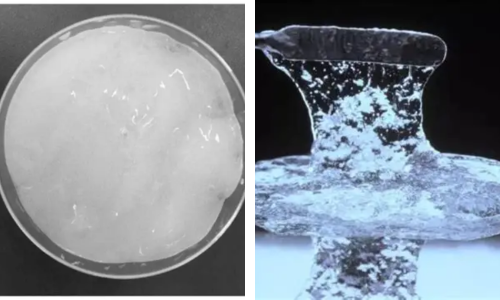
Fig 1. HA gel
2. How is Hyaluronic Acid Gel Made?
Making hyaluronic acid gel involves biotechnology and precise formulation. The process has two main steps:
Step 1: Making the hyaluronic acid ingredient
Today, most HA is made through microbial fermentation:
- Bacteria like Streptococcus equi are grown in large tanks. They are fed nutrients such as glucose. These bacteria produce and release hyaluronic acid.
- The HA is then separated and purified. Impurities like proteins and nucleic acids are removed.
- The final product is dried and turned into a white powder—sodium hyaluronate. It can be processed into different molecular sizes:
- High molecular weight: form a film on the skin to lock in moisture.
- Medium molecular weight: provide moisture to the outer skin layers.
- Low molecular weight: penetrate deeper into the skin for better hydration.
Step 2: Making the gel
Turning the powder into gel requires careful mixing:
- The powder is slowly added to purified water. It swells and forms a thick liquid.
- Thickeners like carbomer are added. The pH is adjusted to form a stable gel.
- Other ingredients are mixed in, such as moisturizers (e.g., glycerin), preservatives, and active compounds (e.g., vitamin B5 or centella extract).
Key factors for a good gel:
- Mixed molecular weights: better hydration at different skin levels.
- High purity: less likely to irritate, good for sensitive skin.
- Good formulation: affects stability, texture, and effectiveness.
* Stanford Chemicals Company (SCC) offers high-purity hyaluronic acid powder in various molecular weights. It is ideal for making hyaluronic acid gels.
3. Medical Uses of Hyaluronic Acid Gel
Hyaluronic acid gel is widely used in medical settings. For example, after orthopedic surgery, it can be applied to the treated area once nerves and tendons are repaired. It helps prevent tendon adhesions.
Additionally, after abdominal surgery, medical-grade hyaluronic acid can be sprinkled into the abdominal cavity following irrigation. It effectively protects the intestinal surgical site and prevents adhesions that could lead to bowel obstruction. It is also commonly used in gynecology to prevent adhesions.
Moreover, it can be used as an irrigation fluid during orthopedic surgeries. This helps reduce excessive inflammatory responses in the surgical area, minimizing scar formation. It may also serve other specific medical purposes.
4. Benefits of Hyaluronic Acid Gel for the Skin
Hyaluronic acid gel is a natural transparent polysaccharide. It was initially used mainly for moisturizing. Now, it is also used in wrinkle reduction and cosmetic procedures. It plumps the skin, smooths wrinkles, and enhances facial contours.
HA gel naturally exists in a gel-like form in the dermis of human skin. It helps store water and increases skin volume. However, its levels decrease with age. This causes the skin to lose moisture, leading to dullness, aging, and wrinkle formation.
Therefore, hyaluronic acid gel is primarily used in both medical and cosmetic fields.
5. Can Hyaluronic Acid Gel Remove Scars?
It does not significantly remove existing scars. Scars are a type of tissue that forms naturally as part of the skin’s healing process after injury. Applying hyaluronic acid gel has little effect on already formed scar tissue. Scars are a type of tissue that forms naturally as part of the skin’s healing process after injury. Applying hyaluronic acid gel has little effect on already formed scar tissue.
But if the gel is applied just after skin damage occurs, it can reduce inflammation and support skin repair. HA is a high-molecular-weight polysaccharide. It is widely distributed throughout the human body, especially in the skin. It is a normal component of the dermis and belongs to the connective tissue. Therefore, HA gel has anti-inflammatory effects and can be absorbed directly by the skin.
The post What Does Hyaluronic Acid Gel Do? appeared first on Stanford Chemicals.
]]>The post Sodium Hyaluronate Coating for Drug Delivery appeared first on Stanford Chemicals.
]]>Why is Sodium Hyaluronate Used in Drug Delivery
This is mainly attributed to its distinctive physicochemical and biological properties.
Sodium hyaluronate is a linear polysaccharide containing repeating disaccharide units, which contains lots of carboxyl groups (-COOH) and hydroxyl groups (-OH). Its structure renders it highly hydrophilic. It is water-soluble and can make very viscous solutions, which suits hydrophilic drug loading. Besides, its carboxyl groups and hydroxyl groups can be chemically modified to conjugate drug molecules or functional groups to construct intelligent delivery systems. The common modification methods involve esterification, amidation, and crosslinking.
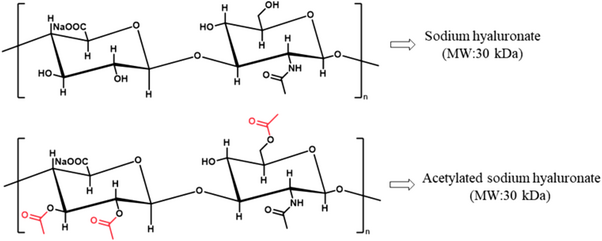
Fig 1. The structures of sodium hyaluronate and its acetylated derivatives modified by esterification[1]
The structure of sodium hyaluronate provides the basis for drug delivery, while its biological properties are the key to the choice.
Hyaluronic acid is a natural ligand for CD44 receptor, which is highly expressed on most tumor cells, inflammatory tissues, and stem cells. HA-modified drug delivery systems are able to actively target these diseased tissues, enhancing local drug concentrations. CD44 is like a signal beacon, guiding HA to the locations of disease. Once the HA-coated drug reaches the target, it must be released in order to function. This is where the next key player enters: hyaluronidase. This enzyme degrades HA and, conveniently, is highly active in tumor or inflamed tissue. In the presence of hyaluronidase, the HA carrier degrades, releasing the therapeutic payload.
Hyaluronic Acid or Sodium Hyaluronate?
In the application of drug delivery systems, sodium hyaluronate is utilized instead of hyaluronic acid. Because the sodium salt form is more stable and more soluble in water at neutral or alkaline pH.
What Value Does Sodium Hyaluronate Coating Offer for Drug Delivery
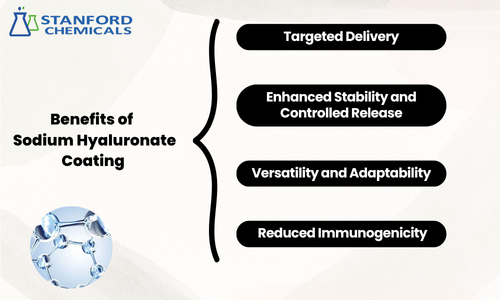
- Targeted Delivery
Shell drug carriers with HA enable selective binding to such receptors, enabling targeted delivery of the drugs to the disease cells or tissues. For example, HA-coated nanoparticles can deliver chemotherapy drugs specifically to tumor cells with less damage to healthy tissues and fewer side effects.
- Enhanced Stability and Controlled Release
Sodium hyaluronate coatings protect encapsulated drugs from premature degradation and stabilize delivery systems. The viscoelastic formation of solutions by HA and the mucoadhesive properties enable sustained, controlled drug delivery with extended preservation of therapeutic levels at target sites. For instance, HA has been used to prepare sustained-release protein and peptide formulations, where traditional carriers like PLGA can cause inflammation and protein denaturation.
- Versatility and Adaptability
Sodium hyaluronate coatings are biocompatible with multiple drug carriers, ranging from nanoparticles and liposomes to micelles. It is chemically tunable and may be conjugated with various therapeutic molecules such as small-molecule drugs, proteins, and nucleic acids. HA coatings may also be made responsive towards specific stimulants (e.g., pH or temperature stimuli), enabling controlled drug release at targeted locations.
- Reduced Immunogenicity
As a naturally occurring substance in the human body, HA is biocompatible. It is less likely to trigger immune responses than synthetic materials. Sodium hyaluronate-coated nanoparticles are least familiar and recognized by the immune system, enhancing their shelf life and stability in the blood circulation for better target delivery.
Applications of Sodium Hyaluronate Coating in Drug Delivery
- Cancer treatment: Targeted drug delivery of chemotherapy drugs to cancer cells while minimizing systemic toxicity.
- Ocular drug delivery: Increasing the residence time and bioavailability of drugs in the eye for conditions such as glaucoma and dry eyes.
- Wound healing: Encouraging tissue repair and regeneration by delivering growth factors and other biomacromolecules to the injured area.
- Inflammatory arthritis treatment: Inflamed joint delivery of anti-inflammatory agents to alleviate inflammation and pain.
- Gene therapy: Enhancing the delivery efficiency and stability of gene vectors for targeted gene expression or silencing.
- Transdermal drug delivery: Enabling drug penetration through the skin for local and systemic delivery.
Conclusion
Sodium hyaluronate coatings are a powerful instrument in modern drug delivery that combines natural targeting functions with designed specificity. Employing HA’s inherent physicochemical properties and biological interactions, researchers can design systems to maximize therapeutic benefit while minimizing side effects. For more information, please check Stanford Chemicals Company (SCC).
[1] Chen, Fan & Guo, Xueping & Wu, Yue. (2023). Skin antiaging effects of a multiple mechanisms hyaluronan complex. Skin Research and Technology. 29. 10.1111/srt.13350.
The post Sodium Hyaluronate Coating for Drug Delivery appeared first on Stanford Chemicals.
]]>The post What Food Additives Are Safe appeared first on Stanford Chemicals.
]]>What is Food Additive?
Different countries have varying definitions of food additives. The U.S. Federal Food, Drug, and Cosmetic Act (FD&C Act) defines food additives as:
Any substance directly or indirectly added to food that may become part of the food or affect its characteristics (including substances used in production, processing, packaging, transport, or storage), unless the substance is exempt (e.g., GRAS substances or prior-sanctioned substances).
Food additives have the following three characteristics:
- They are added to food and are not usually consumed alone as food.
- They include both synthetic and natural substances.
- They are added to improve food quality, color, flavor, and aroma, or for preservation and processing purposes.
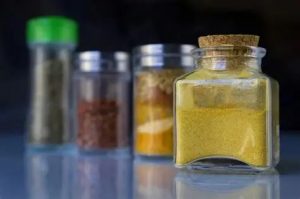
What are The Types of Food Additives?
Different countries classify food additives differently. Below is a classification based on function.
1. Antioxidants
Antioxidants are additives used to delay or prevent food oxidation. They are classified as direct food additives. Their mechanisms vary:
- Some (like vitamin E) are easily oxidized, reacting with oxygen first to protect food.
- Others release hydrogen ions to break down peroxides formed during fat oxidation.
- Some bind to peroxides, interrupting the oxidation process.
| Antioxidant | Applicable Foods | Characteristics |
| Vitamin E | Cooking oil, infant formula, nuts | Natural, safe, but costly |
| BHA/BHT | Chips, instant noodles, sausages, gum | Synthetic, heat-resistant, but restricted in some countries |
| TBHQ | Fried foods, baked goods | Highly effective, but harmful in excess |
| Tea polyphenols | Meat products, beverages, candy | Natural, also antibacterial |
| Vitamin C | Juice, canned food, pickled meat | Preserves color and acts as an antioxidant |
2. Preservatives
Preservatives inhibit microbial growth and extend shelf life. They are divided into chemical and natural preservatives.
2.1 Chemical Preservatives are synthetic, strong antimicrobial effects, low cost, but some have usage limits.
| Preservative | Applicable Foods | Characteristics |
| Benzoic acid/sodium benzoate | Carbonated drinks, juice, soy sauce | Effective in acidic environments (pH <4.5) |
| Sorbic acid/potassium sorbate | Cheese, baked goods, meat | Safer, works in wider pH range (≤6.5) |
| Sodium nitrite | Cured meat, ham, sausages | Prevents botulism but may form carcinogenic nitrosamines |
| Sulfur dioxide/sulfites | Dried fruit, wine, dehydrated vegetables | Also acts as a bleach |
| Parabens | Soy sauce, vinegar, jam | Effective against mold and yeast |
2.2 Natural Preservatives are extracted from plants, animals, or microbes. They are safer but costlier.
| Preservative | Source | Applicable Foods | Characteristics |
| Tea polyphenols | Tea leaves | Meat, beverages | Antioxidant + antibacterial |
| Allicin | Garlic | Seasonings, sauces | Broad-spectrum antimicrobial, strong odor |
| Rosemary extract | Rosemary | Oils, snacks | Natural alternative to BHA/BHT |
| Nisin | Lactic acid bacteria | Cheese, canned food | Targets only Gram-positive bacteria |
| Natamycin | Streptomyces | Yogurt, bread | Antifungal |
| Chitosan | Crustacean shells | Fruit preservation | Edible film |
| Lysozyme | Egg whites | Dairy, sake | Breaks bacterial cell walls |
3. Color Additives
Color additives enhance or restore food color. They are classified as natural or synthetic.
3.1 Natural Colors are safer but less stable, prone to fading.
| Color | Source | Applicable Foods | Characteristics |
| β-carotene | Carrots, algae | Beverages, butter, candy | Orange, precursor to vitamin A |
| Carmine | Cochineal insects | Meat, jam | Red, restricted in some countries |
| Beet red | Red beets | Ice cream, yogurt | Purple-red, pH-sensitive |
| Chlorophyllin | Spinach, alfalfa | Gum, pastries | Green, light-sensitive |
| Curcumin | Turmeric | Curry powder, mustard | Yellow, oxidizes easily |
| Anthocyanins | Purple cabbage, grape skin | Juice, jelly | Red/blue, pH-dependent |
3.2 Synthetic Colors are vibrant, stable, low-cost, but some may be harmful.
| Color | FD&C Code | Applicable Foods | Regulatory Status |
| Tartrazine (E102) | Yellow 5 | Candy, soda | EU requires warning labels |
| Sunset yellow (E110) | Yellow 6 | Snacks, sauces | Limited in the EU |
| Brilliant blue (E133) | Blue 1 | Ice cream, canned food | Allowed in U.S. and China |
| Allura red (E129) | Red 40 | Baked goods, drinks | Most used red dye in U.S. |
The U.S. primarily uses synthetic colors labeled with FD&C codes (e.g., Red 40, Yellow 5). While controversial, the FDA deems them safe in regulated amounts. Consumers can check labels and opt for natural alternatives.
4. Thickeners
Thickeners improve texture and viscosity, for example, pectin or gelatin in yogurt to prevent whey separation. Natural thickeners are now the industry standard.
| Thickener | Source | Characteristics | Common Uses |
| Xanthan gum | Bacterial fermentation | Acid/heat-resistant | Salad dressing, gluten-free baking |
| Carrageenan | Red algae | Forms gels with calcium | Ice cream, plant-based milk |
| Guar gum | Guar beans | Dissolves in cold water | Beverages, sauces |
| Pectin | Citrus/apple peels | Requires sugar and acid | Jam, yogurt |
| Gum arabic | Acacia tree resin | Highly soluble | Candy, soda |
| Locust bean gum | Carob seeds | Works with carrageenan | Cheese, plant-based dairy |
5. Flavor Enhancers
Flavor enhancers amplify or improve taste. MSG is the most widely used in the U.S.
| Enhancer | Characteristics | Common Uses |
| MSG | Strong umami boost | Stir-fries, soups, snacks |
| I+G | Synergizes with MSG | Instant noodles, chips |
| Disodium guanylate | Naturally in mushrooms | Premium seasonings |
| Citric acid | Sharp acidity | Drinks, candy, canned food |
| Lactic acid | Mild acidity, dairy notes | Yogurt, fermented foods |
Which Are Safe?
The following table summarizes the safety information of the common food additives mentioned in the article.
| Type | Additive | Safety Notes |
| Antioxidants | Vitamin E | Generally recognized as safe (GRAS). Excess may affect blood clotting (daily limit ~1000mg). |
| BHA/BHT | Approved by FDA but restricted by EFSA. | |
| TBHQ | Permitted in the U.S. (≤0.02% in oils). High doses may cause nausea or blurred vision. | |
| Tea polyphenols | Natural and safe. Excess may interfere with iron absorption. | |
| Vitamin C | Safe. Excess may cause diarrhea (daily limit 2000mg). | |
| Preservatives | Benzoic acid/Sodium benzoate | Safe in acidic environments (pH<4.5). Excess may trigger allergies. |
| Sorbic acid/Potassium sorbate | Safer, works in a wider pH range (≤6.5). Excess may irritate the stomach. | |
| Sodium nitrite | Prevents botulism but may form carcinogenic nitrosamines (limit: ≤150ppm in cured meats). | |
| Sulfur dioxide/Sulfites | May trigger asthma (allergen labeling required). Restricted in the EU for dried fruits. | |
| Parabens | Banned in some countries (e.g., Japan). Potential endocrine disruptor. | |
| Tea polyphenols | Same as antioxidants—natural and safe. | |
| Allicin | Safe but has a strong odor. Excess may irritate the stomach. | |
| Rosemary extract | Natural alternative to BHA/BHT. No known risks. | |
| Nisin | Safe. Targets only Gram-positive bacteria. Non-toxic to humans. | |
| Natamycin | Safe. EU restricts its use to cheese surfaces. | |
| Chitosan | Natural and safe. Widely used in edible films. | |
| Lysozyme | Safe. Derived from egg whites. May conflict with religious dietary rules. | |
| Colorants | β-Carotene | Safe. Precursor to vitamin A. Excess may cause yellowing of the skin. |
| Carmine | Insect-derived. EU requires allergen labeling. | |
| Beet red | Safe but pH-sensitive (stable in acidic conditions). | |
| Chlorophyllin | Safe but degrades in light. | |
| Curcumin | Safe. Excess may cause stomach discomfort. | |
| Anthocyanins | Safe. Color changes with pH (e.g., blueberry juice turns red). | |
| Tartrazine (E102) | Allowed in the U.S. EU requires warning labels for hyperactivity in children. | |
| Sunset yellow (E110) | Similar to tartrazine. Restricted in some countries. | |
| Brilliant blue (E133) | Permitted in the U.S. and China (with usage limits). | |
| Allura red (E129) | Most used red dye in the U.S. Banned in some Nordic countries. | |
| Thickeners | Xanthan gum | Safe. Excess may cause bloating. |
| Carrageenan | Controversial: Degraded form may cause inflammation. Safe at regulated levels. | |
| Guar gum | Safe and cost-effective. Excess may cause diarrhea. | |
| Pectin | Safe. Requires sugar and acid to form gels. | |
| Gum arabic | Safe. Highly soluble. Common in candies. | |
| Locust bean gum | Safe. Often used with carrageenan. | |
| Flavor Enhancers | MSG (Monosodium glutamate) | FDA-approved. Some sensitive individuals report temporary headaches. |
| I+G (Disodium inosinate + guanylate) | Safe. Synergizes with MSG to enhance umami. | |
| Disodium guanylate | Safe. Naturally found in mushrooms. Used in premium seasonings. | |
| Citric acid | Safe. Excess may erode tooth enamel. | |
| Lactic acid | Safe. Excess may cause acidosis (rare). |
If you have any requirements for the above-mentioned food additives, please feel free to contact us via email at [email protected] or submit an Inquiry. Stanford Chemicals Company (SCC) will make every effort to provide products that meet your needs.
The post What Food Additives Are Safe appeared first on Stanford Chemicals.
]]>The post Is Food-Grade Hyaluronic Acid Really Useful for Health? appeared first on Stanford Chemicals.
]]>What Is Hyaluronic Acid?
First, tell us about this favorite ingredient. Hyaluronic acid (HA) is an acidic mucopolysaccharide, first found and isolated from the cow eye’s vitreous humour. The naturally occurring agent can be seen in the human body, mostly in eyes, knee joint synovial fluid, and skin. HA is crucial in maintaining hydration of the skin, lubricating joints, regulating blood vessel permeability, and healing wounds. As a result of these uses, it is extensively used in skincare, joint therapy, eye drops, and pharmaceuticals.
Why Is Hyaluronic Acid Important?
Research shows that as people age, their ability to produce HA declines. For example, if the level of hyaluronic acid in a 20-year-old is taken as 100%, at the age of 60, it reduces to merely 25%. Not just limited to skin aging and wrinkle formation, but the reduction of hyaluronic acid is also related to age-related changes and conditions in joints, blood vessels, heart, eyes, and brain.[i]

Fig 1. Hyaluronic acid is lost with age
Does Food-grade Hyaluronic Acid Really Benefit Health?
The million-dollar question is whether food-grade hyaluronic acid can be absorbed and utilized by the body. Scientists have diligently endeavored to research this.
One of these studies was carried out by the Mucosal Immunology and Biology Research Center at Massachusetts General Hospital, which is associated with Harvard Medical School. In their study, they analyzed how food-grade hyaluronic acid affects gastrointestinal health. The findings revealed that hyaluronic acid is good for gut health in various ways.[ii]
- Reducing Intestinal Inflammation & Supporting Gut Health
Hyaluronic acid reduces intestinal inflammation and promotes overall gut health. In the study, mice pre-treated with HA were seen to be protected against colon damage and inflammation induced by Citrobacter rodentium. The mice were also seen to have reduced symptoms of weight loss, rectal bleeding, and diarrhea.
- Increasing Gut Microbiome Diversity
Mice that received HA exhibited a significant rise in the Simpson Diversity Index, indicating a more diverse and healthier gut microbial population.
- Strengthening the Gut Barrier Function
Hyaluronic acid improves gut barrier function. The intestinal mucus layer, composed of mucin MUC2 from goblet cells and water and inorganic salts, is a vital protective barrier. Research showed that oral HA augmented goblet cell count and enhanced mucin secretion, thereby enhancing the protection of the gut against infection and injury.
Additional Benefits of Oral Hyaluronic Acid
In addition to gut health, oral hyaluronic acid has also been shown to hydrate skin and reverse aging. A 2017 clinical trial in the Journal of Evidence-Based Complementary and Alternative Medicine followed 20 healthy women aged 45 to 60 who took HA daily for 40 days.[iii] Skin assessments conducted before, during, and after the trial revealed noticeable improvements in elasticity and hydration, along with reductions in roughness and wrinkle depth.
Hyaluronic acid also supports joint health. While HA injections are commonly used to treat osteoarthritis, oral HA has demonstrated positive effects as well. A 2020 study by Hokkaido University, published in the European Journal of Pharmaceutics and Biopharmaceutics, explored how high-molecular-weight HA is broken down by gut microbes into smaller, absorbable fragments. These fragments then enter the lymphatic system and bloodstream, delivering HA to organs and tissues that need it.

Fig 2. The process of food-grade HA being absorbed by the human body[iv]
Conclusion
A number of reputable studies have confirmed that oral HA is not only absorbed by the body but also produces concrete health benefits. With foods containing HA gaining popularity, increasing numbers of consumers are stepping forward with visible positive differences in their skin and overall health. The evidence suggests that the dietary intake of food-grade hyaluronic acid can be a valuable addition to good health and combating the signs of aging.
* Free samples are available. For pricing inquiries, please contact us for a quote: Get A Quote.
[[i]] Feng Ning, Shi Yanli, Guo Fengxian, Guo Xueping. Study on the improvement of skin moisture and antioxidant effect of oral hyaluronic acid in vivo[J]. Food and Drug, 2016, 18(6): 386-390
[[ii]] Mao T, Su CW, Ji Q, Chen CY, Wang R, Vijaya Kumar D, Lan J, Jiao L, Shi HN. Hyaluronan-induced alterations of the gut microbiome protects mice against Citrobacter rodentium infection and intestinal inflammation. Gut Microbes. 2021 Jan-Dec;13(1):1972757. doi: 10.1080/19490976.2021.1972757. PMID: 34592891; PMCID: PMC8489935.
[[iii]] Göllner I, Voss W, von Hehn U, Kammerer S. Ingestion of an Oral Hyaluronan Solution Improves Skin Hydration, Wrinkle Reduction, Elasticity, and Skin Roughness: Results of a Clinical Study. J Evid Based Complementary Altern Med. 2017 Oct;22(4):816-823. doi: 10.1177/2156587217743640. Epub 2017 Dec 4. PMID: 29228816; PMCID: PMC5871318.
[[iv]] Xueli Zheng, Botao Wang, Xin Tang, Bingyong Mao, Qiuxiang Zhang, Tianmeng Zhang, Jianxin Zhao, Shumao Cui, Wei Chen, Absorption, metabolism, and functions of hyaluronic acid and its therapeutic prospects in combination with microorganisms: A review, Carbohydrate Polymers, Volume 299, 2023, 120153, ISSN 0144-8617, https://doi.org/10.1016/j.carbpol.2022.120153.
The post Is Food-Grade Hyaluronic Acid Really Useful for Health? appeared first on Stanford Chemicals.
]]>The post What Are the Benefits of Hyaluronic Acid for Hair in Shampoo appeared first on Stanford Chemicals.
]]>What Is Hyaluronic Acid
Hyaluronic acid is an essential substance between cells that occurs in high concentrations in the skin and joints. It has an amazing water-holding capacity—1 gram of hyaluronic acid contains approximately 1,000 times its own weight of water. Due to its typical molecular structure and physicochemical properties, it performs many vital physiological activities in the body. For example, hyaluronic acid used for cosmetic injection can be used for filling shallow depressions or defects on the face, which has a beautifying effect. This compound is also metabolized and absorbed by the body cells without depositing residual residues behind, which makes it highly demanded in the cosmetic industry.
Why Can Hyaluronic Acid be Used in Shampoo
To comprehend this question, let us first look at the structure of hair, as depicted in Figure 1. Human hair can be considered a slender biological fiber, with three principal layers from outside to inside. The first and outermost layer is the cuticle, which encloses and covers the fiber as tiles enclose a roof, protecting it against external damage. It determines the hair’s shine and texture. Healthily coated cuticles are piled neatly upon one another, actually locking in moisture and reflecting light. The mid-layer is the cortex, which accounts for 75%-90% of the weight of the hair. It consists of tightly packed keratin fibers and pigment granules, giving hair its elasticity, strength, and color. The inner layer is the medulla, made up of loose, open cells, more visible in thicker hair. Hair also contains minute traces of zinc and other metals, vitamins, and approximately 10% water.
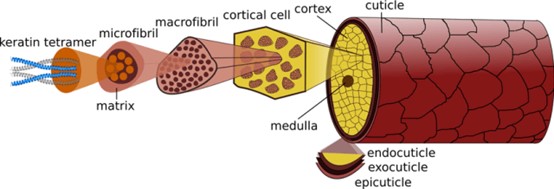
Figure 1. The structure of hair
This unique hair structure provides an ideal environment for hyaluronic acid to work its magic. While the tile-like cuticle protects the hair shaft, the gaps in the cuticle allow small hyaluronic acid molecules into the cortex. On the other hand, larger molecules adhere to the surface of the cuticle, forming an open hydrating film.
How Does Hyaluronic Acid Improve Hair Health
Hyaluronic acid can form a thin film on the hair surface, providing moisturizing, lubricating, protective, and anti-static effects.
- Deep hydration, reducing dryness and frizz
The main composition of hair is keratin, and it is sensitive to moisture. Dehydration causes hair to be dry and brittle due to raised cuticles. Hyaluronic acid absorbs moisture from the air and forms a moisturizing film on the hair surface that softens and shines hair.
- Repairing damaged hair
Perming, heat styling, exposure to UV rays, and coloring can compromise the cuticle of the hair and cause hollowing of the strands. Small hyaluronic acid molecules penetrate deep into the hair shaft, filling in damaged areas and bolstering elasticity and resilience.
- Reducing static and improving smoothness
In dry conditions, hair gets easily entangled under static due to friction, hence combing becomes difficult. The moisturizing effect of hyaluronic acid prevents static buildup, rendering hair smooth for detangling and minimizing damage caused by yanking.

Different molecular weights yield different effects.
High-molecular-weight hyaluronic acid is more viscous in texture, contains more cross-linking bonds, and provides filling and styling benefits. To hair, it protects the strands by forming a flexible, hydrating film that enhances moisture and shine.
Low-molecular-weight hyaluronic acid is watery and distributable. It penetrates deep into the hair shaft, providing intense moisturizing and conditioning to dry and damaged hair.
High vs Low Molecular Weight Hyaluronic Acid for Hair:

Moreover, applying hyaluronic acid to the hair roots can promote thicker hair growth by supplying the scalp with essential nutrients and moisture.
Stanford Chemicals Company (SCC) supplies high, medium, and low molecular weight hyaluronic acid for use as shampoo ingredients. Samples and favorable pricing are available. For inquiries, please contact our specialists: Get A Quote.
The post What Are the Benefits of Hyaluronic Acid for Hair in Shampoo appeared first on Stanford Chemicals.
]]>The post How to Choose Molecular Weight? Instructions for Use on Different Sodium Hyaluronates appeared first on Stanford Chemicals.
]]>Classification by Application: 4 Types of Sodium Hyaluronate
Depending on their uses, sodium hyaluronate can be divided into four grades: Medical Grade, Cosmetic Grade, Food Grade, and Injection Grade.
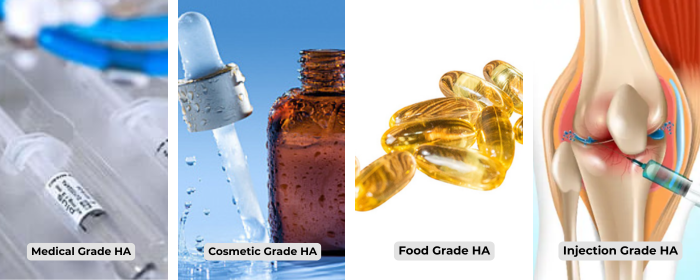
Medical Grade HA
For the pharmaceutical industry, hyaluronic acid is used primarily for ophthalmic surgery, orthopedic injections, wound dressings, and drug delivery systems. Medical-grade HA is subjected to very strict purity and molecular weight distribution requirements, generally needing to comply with pharmacopeial criteria and low endotoxin levels. Each application may have different molecular weight requirements. This article provides a detailed introduction: Medical-Grade Hyaluronic Acid: From Ophthalmic to Multidisciplinary Therapeutic Agent
Cosmetic Grade Sodium Hyaluronate
The cosmetics industry utilizes hyaluronic acid due to its moisturizing and anti-aging effects. It is found in creams, serums, and injectable fillers. Cosmetics-grade sodium hyaluronate typically varies in molecular weight to provide a balance between skin permeability and moisturization. Lower molecular weights can penetrate deeper into the skin, enhancing internal moisturizing effects. Higher molecular weights form a protective layer on the skin’s surface to lock in moisture.
Food Grade HA
In food, sodium hyaluronate is used as a food additive and dietary supplement due to its health effects. Detailed benefits can be found below: What Are the Benefits of Food-Grade Hyaluronic Acid. Since it is taken orally, food-grade hyaluronic acid must meet high purity standards. It is also usually produced at lower molecular weights for absorption in the gastrointestinal tract.
Injection Grade Sodium Hyaluronate
Sodium hyaluronate injection grade is used mainly for intra-articular injections and medical aesthetics. Both these applications require rigorous molecular weight specifications to ensure stability, longevity, and biocompatibility.
Molecular Weight Determines the Uses of Sodium Hyaluronate
Molecular weight of sodium hyaluronate plays a critical role in determining its physical and biological properties, which subsequently decides its applications.
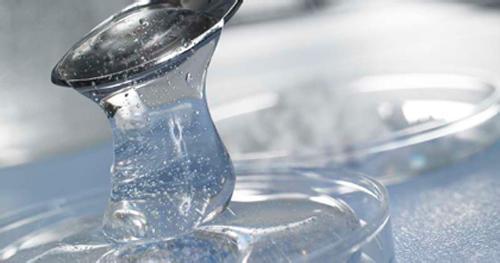
Viscosity and Moisturizing Capacity
Higher molecular weight hyaluronic acid has higher viscosity and higher moisturizing capacity. It is therefore used in medical-grade applications requiring long-term lubrication and support. In cosmetic applications, higher molecular weights help form a moisturizing film on the skin surface, fortifying the skin’s moisture barrier.
Skin Penetration and Absorption
Low molecular weight sodium hyaluronate has shorter chains of molecules that allow it to penetrate deeper into the layers of the skin. It is particularly beneficial in cosmetic applications for enhanced moisturizing and active ingredient delivery. High molecular weight sodium hyaluronate, however, can remain at the skin’s surface to provide instant moisture and form a protective barrier.
Biocompatibility and Degradability
Molecular weight in medical and injection applications affects the activity of sodium hyaluronate with body tissues. High MW sodium hyaluronate is typically more biocompatible and breaks down more slowly. This gives a longer duration of action in tissue engineering and dermal fillers. Lower MW molecules break down faster, which is beneficial for short-term applications or where rapid clearance from the body is desired.
Bioavailability of Supplements
For the food additive sodium hyaluronate, molecular weight determines its ease of absorption and efficacy as a food supplement. Lower molecular weights ensure rapid absorption in the gastrointestinal tract, thereby enhancing their impact on joint function and skin elasticity.
The table 1 below provides a comparison of the molecular weight ranges required for different applications.
Table 1. How to Choose Molecular Weight for Difference Applications
| Application | Core Requirements | Recommended MW Range | Recommended Products |
| Ophthalmic Viscous Agents | High viscoelasticity, support, maintaining surgical space | 1,000–2500 kDa | HA-EM3.0-SC |
| Eye Drops | Lubrication, moisturization, low viscosity to prevent blurring | 50–500 kDa | HA-EM2.0-SC |
| Joint Injections | Long-lasting lubrication, high viscoelasticity | 2000–3000 kDa | HA-EP3.0-SC |
| Wound Dressings | Promote cell migration, anti-inflammatory | 10–100 kDa | HA-EMC-SC |
| Creams | Surface film formation, long-lasting moisture retention | 300–1000 kDa | HAC-N-SC, HAC-L-SC |
| Emulsions | Balance penetration and moisturization | 100–300 kDa | HAC-N-SC |
| Anti-Aging Serums | Transdermal absorption, stimulate collagen synthesis | 10–50 kDa (can be blended with 1-10 kDa) | HAC-Oligo-SC, HAC-Micro-SC |
| Oral Beverages | Easily absorbed by the intestines, high bioavailability | <50 kDa | HAF-Oligo-SC, HAF-Micro-SC |
* Stanford Chemical Company (SCC) is a wholesale distributor of pure organic hyaluronic acid in the United States. Each grade HA is available in high, medium, and low molecular weights.
Clarifying Misconceptions
Although sodium hyaluronate has widespread applications, there are still individuals who have misconceptions about it. Most of these are due to individuals not knowing its molecular weight and applications.
Misconception 1: Higher Molecular Weight is Always Better
Although HMW sodium hyaluronate possesses more viscosity and moisturizing properties, it is not universally suitable. Different applications require certain molecular weights to create the desired effect. For example, in cosmetics, LMW HAs are preferable for deep penetration of the skin; whereas in medical-grade applications, HMW HAs are required to provide long-lasting lubrication and support.
Reference: High VS. Low Molecular Weight Hyaluronic Acid
Misconception 2: All Sodium Hyaluronate is the Same
The molecular weight and purity of sodium hyaluronate vary depending on its applications. Cosmetic-grade, Food-grade, Injection-grade, and Medical-grade are formulated differently with diverse specifications in order to meet the strict requirements of their respective industries. Using the wrong grade will result in subpar performance or even safety issues.
Reference: Medical Grade vs. Cosmetic Grade Hyaluronic Acid: What Are the Differences
Misconception 3: Sodium Hyaluronate is Only Used in Skin and Joints
Although sodium hyaluronate is widely known for its applications in skincare and joint care, its applications are more extensive, including ophthalmology, dentistry, wound healing, and even hair care. Every application entails exploiting different properties of sodium hyaluronate, which are altered based on its molecular weight and composition.
Misconception 4: Higher Purity Always Means Better Performance
Purity is essential, especially for injection and medical applications. However, extremely high purity at times may compromise other desirable characteristics, such as biological activity. The ratio between molecular weight and purity will depend on the target application and desired effect.
The post How to Choose Molecular Weight? Instructions for Use on Different Sodium Hyaluronates appeared first on Stanford Chemicals.
]]>The post Why Does High Molecular Weight Hyaluronic Acid Matter appeared first on Stanford Chemicals.
]]>The Powerful Lubricating Effects of High-Molecular-Weight Hyaluronic Acid
While HA is generally best known for its moisturizing action, its lubricating action is also important. In biomedical applications, such as joint lubrication, ophthalmic surgery and post-surgical anti-adhesion, HMW-HA’s lubricating effect is primarily utilized.
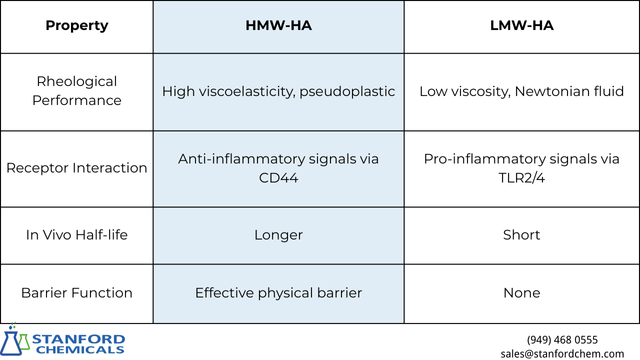
Fig 1. High-molecular-weight hyaluronic acid possesses lubricating and viscoelastic properties.
–Joint Lubrication: HMW-HA is the Standard
HA is a necessary component of synovial fluid, and it is for this reason that physicians manage arthritis by the administration of HA injections. Synovial fluid naturally has HA with a molecular weight between 3,000–6,000 kDa. HMW-HA (which is frequently in need of cross-linking technology) proved to be the best of all the molecular weights. Clinical observation is that in patients with osteoarthritis, the synovial HA concentrations are below 500 kDa, resulting in a >50% loss of viscoelasticity. Thus, HMW-HA injections restore synovial fluid viscosity with improved joint lubrication.
–Ophthalmic Surgery: Relies on Ultra-High Molecular Weight HA
Ophthalmic viscosurgical devices (OVDs) typically use HMW-HA (>2,000 kDa). Its high stability and viscoelasticity allow it to remain longer in the eye, providing longer protection and support and reducing intra- and post-operative complications. In contrary, lower molecular weight HA cannot provide the required rheological performance and can cause corneal edema because of osmotic pressure issues.
–Post-Surgical Anti-Adhesion: HMW-HA as the Foundation
The high viscoelasticity of HMW-HA allows it to offer a physical barrier effect in operating sites for extended periods of time, delivering long-lasting anti-adhesion results. Additionally, its lubricating nature reduces tissue friction, minimizing injury and inflammation.
High vs. Low Molecular Weight Hyaluronic Acid: Anti-Inflammatory or Pro-Inflammatory
In addition to lubrication, HMW-HA’s uses in joint injections, ophthalmic surgery, and anti-adhesion also capitalize on its anti-inflammatory properties.
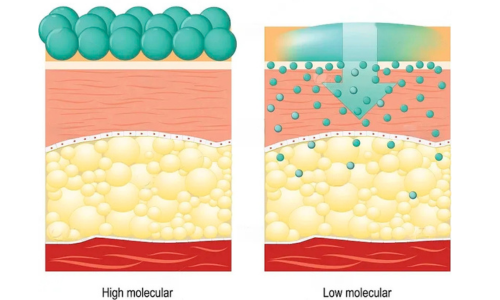
Fig 2. Smaller HA molecules absorb deeper into skin
–HMW-HA Effectively Suppresses Inflammation
It forms an anti-inflammatory covering on tissue surfaces that bars inflammatory cell invasion. It also controls pro- and anti-inflammatory factors, suppressing inflammation. On top of that, HMW-HA enhances tissue stability, promoting efficient healing of wounds. Hence, it is used quite often in arthritis treatment, skincare, and eye surgery to support healing.
–LMW-HA Does Just the Reverse—It May Promote Inflammation
LMW-HA (HA in the range of 10-200 kDa) engages cell surface receptors, including TLR4, activating inflammatory signaling and amplifying the generation of pro-inflammatory cytokines. While the body naturally breaks down HA into LMW-HA during tissue injury (helping initiate immune defense), excessive amounts can lead to chronic inflammation. Therefore, its use must be carefully controlled to balance pro-inflammatory and reparative effects.
Read more: Does Hyaluronic Acid Trigger Inflammation
Can High Molecular Weight Hyaluronic Acid Achieve Anti-Aging and Life Extension
HMW-HA is present in nearly all anti-aging skincare products. It works like a super sponge, forming a barrier film on the skin’s surface that locks in moisture. This makes the skin tight and elastic, smoothing out wrinkles and fine lines. Besides hydration, the film also protects against UV damage, shielding the skin from free radicals.
Benefits of HMW-HA to the Skin:
- Improves elasticity and firmness of skin
- Avoids sagging
- Smooths texture and enhances it
Other than dermatological treatment, studies showed that high molecular weight hyaluronic acid also exhibits medical anti-aging capabilities.
A groundbreaking study published in Nature revealed that increasing expression of the nmr Has2 gene (which produces more HMW-HA) in naked mole rats extended the life of test mice.[i] The study found that HMW-HA not only inhibits cancer but can possibly increase lifespan as well.
Conclusion
Due to its triple benefit of lubrication, anti-inflammatory, and anti-aging, HMW-HA occupies a replaceable niche in the therapy of joints, surgical assistance, and aging protection. Although LMW-HA can add flexibility to certain applications, HMW-HA’s stability and protective action render it popular in many clinical and cosmetic uses.
Stanford Chemicals Company (SCC) offers high molecular weight hyaluronic acid (HA) powder suitable for the pharmaceutical, cosmetic, and research industries. For more product information, contact professionals through the Get A Quote.
[i] Zhang Z, Tian X, Lu JY, Boit K, Ablaeva J, Zakusilo FT, Emmrich S, Firsanov D, Rydkina E, Biashad SA, Lu Q, Tyshkovskiy A, Gladyshev VN, Horvath S, Seluanov A, Gorbunova V. Increased hyaluronan by naked mole-rat Has2 improves healthspan in mice. Nature. 2023 Sep;621(7977):196-205. doi: 10.1038/s41586-023-06463-0. Epub 2023 Aug 23. PMID: 37612507; PMCID: PMC10666664.
The post Why Does High Molecular Weight Hyaluronic Acid Matter appeared first on Stanford Chemicals.
]]>The post Medical-Grade Hyaluronic Acid: From Ophthalmic to Multidisciplinary Therapeutic Agent appeared first on Stanford Chemicals.
]]>In general, HA is categorized into different grades based on the application. Besides the usual cosmetic grade, medical-grade, food-grade, and injectable-grade HA also have extensive market applications. We have already touched on the variations between these types of hyaluronic acid. If you’re curious, click on the following link to learn more: Medical Grade vs. Cosmetic Grade Hyaluronic Acid: What Are the Differences.
HA was first discovered to be added to medicine over 70 years ago. It has continued to be a constantly increasing part of life sciences and medicine through continued research.
Medical Grade Hyaluronic Acid Was First Used in Ophthalmology
Hyaluronic acid is a multi-purpose matrix that occurs widely in the human body. It possesses a good lubricant and biocompatibility. Medically, it is referred to as sodium hyaluronate and is utilized in various ophthalmic surgeries, such as intraocular lens implantation, corneal transplantation, and glaucoma surgery.
Actually, the therapeutic application of HA dates back 70 years. HA was first successfully used in eye surgeries in the 1950s and remains a common practice to this day. Two decades later, HA’s moisturizing property was beautifully utilized by veterinarians when they filled horse joints with HA to improve mobility. Since then, HA has steadily expanded its role in medicine.
Read more: From Surgery to Daily Care: The Versatile Role of Sodium Hyaluronate in Eye Health
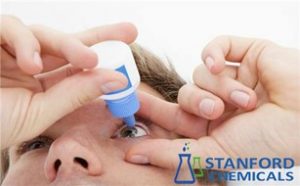
The Diverse Benefits of Medical-Grade Hyaluronic Acid
Presently, with more and more research, applications of HA in medicine are growing day by day. Besides its traditional use in ophthalmology, HA has become a major treatment modality for orthopedic conditions. In osteoarthritis and frozen shoulder, joint lubrication is greatly improved by HA injections, and cartilage is protected.
Moreover, HA use now includes gynecology, tendon fixation, and abdominal surgery, wherein it is utilized as a postoperative device. Its bioadhesive nature allows it to form a protective coating over wounds, both as a lubricant and as a mechanical coating to give the optimal environment for healing.[i] Lastly, HA supplementation is now a standard therapy for cystitis and urinary tract infection, significantly alleviating signs and symptoms with its mucosal protective effect.
HA is also pushing vaccine technology forward. By some chemical manipulations, HA holds pioneering promise as an adjuvant. When mixed with antigens, it enhances antigen-presenting efficacy, induces targeted migration to lymph nodes, and prevents inflammation at the injection site[ii]—offering new conceptual paradigms for vaccine design.
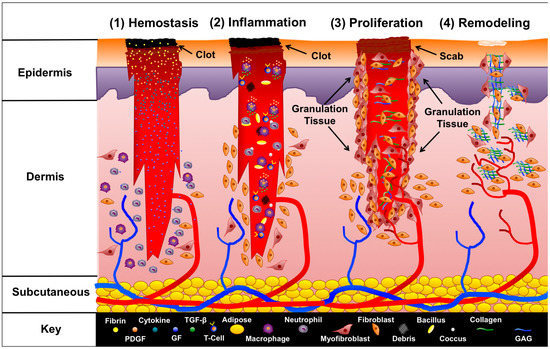
The Role of Hyaluronic Acid Depends on Its Molecular Weight
Low-molecular-weight HA (LMW-HA) can penetrate tissues better, possesses fine bioactivity, and is, therefore, good for anti-inflammatory and tissue repair. Medium-molecular-weight HA (MMW-HA) offers a balance between lubrication and structure. High-molecular-weight HA (HMW-HA) excels in viscoelasticity and water retentive properties. Each of the molecular weight forms has something special to offer—no one “best” one, merely the best for a given purpose. Each has a specific molecular weight range suited to a specific medical application and functional requirement.
The next table provides a working comparison of HA’s properties demanded and molecular weight associated for various medical applications:
| Application | Key Performance Requirements | Recommended MW | Mechanism of Action |
| Ophthalmic Surgery | – High viscoelasticity
– Pseudoplasticity – Biocompatibility |
High (1,000–3,000 kDa) | – Maintains anterior chamber space
– Protects corneal endothelial cells – Facilitates surgical instrument maneuverability |
| Joint Injection | – Moderate viscoelasticity
– Long-lasting lubrication – Anti-inflammatory effects |
Medium (500–1,500 kDa) | – Reduces joint friction
– Inhibits pro-inflammatory cytokines (e.g., IL-1β) – Stimulates endogenous HA synthesis |
| Wound Healing | – Tissue permeability
– Cell-activating capacity – Angiogenic promotion |
Low (<50 kDa) | – Activates CD44/TLR4 receptors to promote repair
– Accelerates fibroblast migration – Modulates macrophage polarization |
| Vaccine Adjuvant | – Immune cell targeting
– Enhanced antigen presentation – Low inflammatory response |
Low (10–200 kDa) | – Promotes dendritic cell uptake
– Enhances lymph node targeting – Activates immune response via TLR4 |
| Anti-Adhesion Barrier | – Mechanical separation
– Controlled degradation – Tissue compatibility |
Medium-High (1,000–2,000 kDa) | – Physically isolates wound surfaces
– Degrades slowly (4–6 weeks) – Reduces fibrin deposition |
This structured comparison serves as a reference for clinical decision-making or product development, emphasizing that optimal HA selection depends on specific medical requirements.
[i] Belluco C, Meggiolaro F, Pressato D, Pavesio A, Bigon E, Donà M, Forlin M, Nitti D, Lise M. Prevention of postsurgical adhesions with an autocrosslinked hyaluronan derivative gel. J Surg Res. 2001 Oct;100(2):217-21. doi: 10.1006/jsre.2001.6248. PMID: 11592796.
[ii] Jiang D, Liang J, Noble PW. Hyaluronan as an immune regulator in human diseases. Physiol Rev. 2011 Jan;91(1):221-64. doi: 10.1152/physrev.00052.2009. PMID: 21248167; PMCID: PMC3051404.
The post Medical-Grade Hyaluronic Acid: From Ophthalmic to Multidisciplinary Therapeutic Agent appeared first on Stanford Chemicals.
]]>The post Why Hyaluronic Acid is an Ideal Material for Wound Healing appeared first on Stanford Chemicals.
]]>What is Hyaluronic Acid
Hyaluronic acid (Hyaluron, HA) is a naturally occurring polysaccharide molecule found in humans and other organisms. It is widely distributed in the human body, primarily present in the skin, joint fluid, eyes, and connective tissues.
HA Structure
The basic structure of hyaluronic acid consists of two types of sugar molecules arranged alternately:
- D-Glucuronic Acid (GlcA)
- N-Acetyl-D-Glucosamine (GlcNAc)
These two monosaccharides are alternately connected with β-1,3 and β-1,4 glycosidic linkages to disaccharide repeating units. This specific linkage allows HA to possess a linear, unbranched conformation, which avoids branching and complex three-dimensional arrangements, ensuring its high water capacity and fluidity. The carboxyl and hydroxyl groups provide opportunities for HA chemical modification. Hence, it can be synthesized into various hydrogels, fillers, and biomedical materials for various applications.
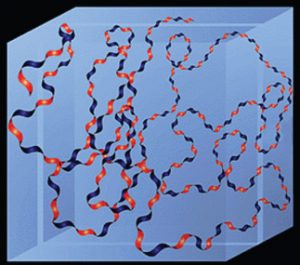
Fig 1. Hyaluronan hydrophilic properties[1]
HA Physiological Functions
As mentioned earlier, hyaluronic acid exists in tissues such as the skin, joints, and eyes in the human body, where it performs important functions:
- Skin: Protects the moisture and elasticity of the skin, softens wrinkles, and delays aging.
- Joints: Lubricates joints, reduces friction, and alleviates arthritis symptoms.
- Eyes: Aids in maintaining the shape and lubrication of the eyeball.
Besides this, hyaluronic acid also serves an important physiological function of wound healing.
Why Hyaluronic Acid Can Heal Wounds
Hyaluronic acid is naturally present in the human body. Endogenous HA and exogenous HA are chemically extremely close. Therefore, the application of hyaluronic acid products in wound healing reduces immune system recognition and rejection reactions. Furthermore, HA is a biodegradable compound, which is degraded by hyaluronidases over time, preventing the accumulation and potential toxicity of the compound in the body. In general, hyaluronic acid is safe, non-toxic, and bio-metabolizable, providing the foundation for it to act as a material in wound healing.
Of course, biocompatibility is just a foundation; the important thing is that hyaluronic acid plays in a number of different functions during the wound healing process through various mechanisms.
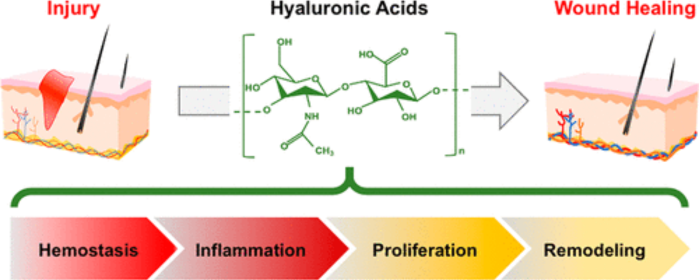
Fig 2. Wound healing process[2]
1. Hemostasis
Hemostasis is the first step in wound healing. The mechanism of hemostasis is to stop bleeding by platelet aggregation and blood clotting, sealing the wound from infection. HA can bind to CD44 receptors on the platelet surface, promoting platelet activation and aggregation, and blood clot formation. In addition, HA’s high molecular weight and viscoelasticity allow it to form a viscous physical barrier on the wound surface, restricting blood loss.
2. Inflammatory Phase
During this phase, inflammatory mediators are released so that leukocytes and other immune cells can migrate into the wound site. They suppress infection, debride the wound, and create good conditions for tissue repair and regeneration. During this phase, the primary role of HA is to induce the migration and proliferation of inflammatory cells. While this increases the inflammatory response, exogenous HA also has anti-inflammatory activity. Some studies show that exogenous HA has been found to reduce the infiltration of inflammatory cells and decrease the inflammatory response. In conclusion, HA guarantees the wound healing is enhanced by the optimal amount of inflammation.
3. Proliferation Phase
The proliferation phase is the critical phase of healing wounds, including angiogenesis, epithelial cell migration and proliferation, and repair of extracellular matrix. During this phase, HA plays a range of roles:
- Promotes Cell Migration and Development: HA triggers fibroblast and epithelial cell proliferation, enabling the wound to close rapidly.
- Promotes Angiogenesis: HA stimulates the growth of new blood vessels to supply new tissue with oxygen and nutrients.
- Enables Extracellular Matrix Development: HA stimulates the production of collagen, reconstitutes tissue structure, and enhances wound strength.
- Retains the Wound Moist: HA keeps the wound in a moist state to enable cell functioning and infection prevention, thereby accelerating healing.
4. Remodeling Phase
The remodeling stage is the final phase of the healing process. In this stage, HA takes part in control of reorganization of collagen to make tissue tougher and elastic as well as preclude scar formation. The previously mentioned anti-inflammatory properties of HA continue to play a role in this phase. It can reduce local inflammation in the wound, promoting the recovery of healthy tissue. Moreover, HA can also promote the synthesis of elastin. With the support of elastin, the healed skin experiences less tightness, restoring its original elasticity and flexibility.
What are the Hyaluronic Acid-Based Dressings
Given the powerful healing property of hyaluronic acid, how can researchers disregard it? Its most common applications are HA-based dressings.
Hyaluronic acid dressings are medical wound-covering agents composed of sodium hyaluronate (sodium salt of HA) that provide an extremely conducive microenvironment for wound repair. They can also be blended with other substances, such as antimicrobial silver ions, collagen, chitosan, etc. Depending on the applications, they exist in various forms.
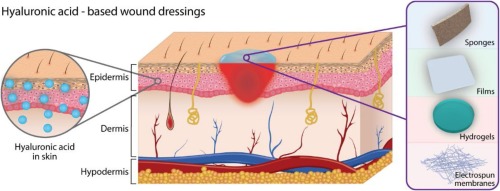
Fig 3. Hyaluronic Acid-Based Dressings[3]
1. Hyaluronic Acid Hydrogel Dressings
Hyaluronic acid hydrogels are the most advanced and versatile type of HA dressings. They are formed through physical or chemical crosslinking, yielding a three-dimensional network hydrophilic gel. They provide a stable moist environment, allowing cell migration and growth. Stable hyaluronic acid hydrogels, for example, can be formed by carbodiimide hydrochloride and adipic dihydrazide crosslinking.
* Suitable for chronic ulcers and burns.
2. Hyaluronic Acid Sponge Dressings
These are highly porous, absorbent dressings. Like a sponge, they are able to suck out excess exudate and prevent maceration. They provide physical support as well, which prevents overgrowth of granulation tissue. They are some of them are mixed with chitosan to enhance antibacterial activity.
* Suitable for highly exudative wounds and postoperative bleeding wounds.
3. Hyaluronic Acid Film Dressings
The most significant benefit of film dressings is their thinness and breathability. With a thickness as low as 0.01~0.1mm, they provide excellent breathability. They are also convenient to apply, sticking to the wound surface without needing secondary fixation.
* Suitable for minimally invasive facial surgeries.
4. Hyaluronic Acid Sprays
These are dressing items that trap sodium hyaluronate in liquid form in pressurized cans or pump bottles, which are applied directly to the skin or wound surface as a spray. Their key features include ease of use, immediate moisturization, and rapid film formation. Medical sprays can also be employed to deliver antibiotics or cytokines for selective drug delivery.
* Suitable for large-area burns and oral/nasal mucosal ulcers.
Other than these traditional dressings, with technology increasing, the market also launched 3D-printed custom dressings. These use a bio-ink composed of HA and fibroblasts to print active dressings with precise matching of the wound contour. They can replicate complicated wounds in a very accurate manner, for instance, nasal defects repair.
Stanford Chemicals Company (SCC) offers high-quality hyaluronic acid (HA) powder raw materials suitable for the pharmaceutical, cosmetic, and research industries. Their HA powder is characterized by high purity, excellent solubility, and a variety of molecular weight options, ensuring outstanding performance across different applications. Whether you need it for moisturizing formulations, injectable fillers, eye drops, or medical dressings, SCC can meet your requirements. For more product information, contact professionals through the Get A Quote.
[1] Frenkel JS. The role of hyaluronan in wound healing. Int Wound J. 2014 Apr;11(2):159-63. doi: 10.1111/j.1742-481X.2012.01057.x. Epub 2012 Aug 14. PMID: 22891615; PMCID: PMC7950635.
[2] Polizzi, A.; Leanza, Y.; Belmonte, A.; Grippaudo, C.; Leonardi, R.; Isola, G. Impact of Hyaluronic Acid and Other Re-Epithelializing Agents in Periodontal Regeneration: A Molecular Perspective. Int. J. Mol. Sci. 2024, 25, 12347. https://doi.org/10.3390/ijms252212347
[3] Mariana F.P. Graça, Sónia P. Miguel, Cátia S.D. Cabral, Ilídio J. Correia, Hyaluronic acid—Based wound dressings: A review, Carbohydrate Polymers, Volume 241, 2020, 116364, ISSN 0144-8617, https://doi.org/10.1016/j.carbpol.2020.116364.
The post Why Hyaluronic Acid is an Ideal Material for Wound Healing appeared first on Stanford Chemicals.
]]>